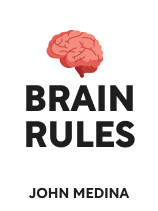

This article is an excerpt from the Shortform book guide to "Brain Rules" by John Medina. Shortform has the world's best summaries and analyses of books you should be reading.
Like this article? Sign up for a free trial here .
Do you often find yourself doing two or more things at once? Did you know that multitasking is actually a myth?
Neuroscience proves that the brain cannot handle doing two tasks at once, hence why multitasking fails. While many people believe they have mastered handling many tasks at once, Dr. John Medina believes this is actually the myth of multitasking because you lose your focus when you redirect your attention.
Here are a few reasons why multitasking is a myth, and how to stay focused.
How Attention Works
At any given time, there are millions of sensory neurons carrying messages to your brain, each competing for your attention. But only a few capture it. Stimuli direct our attention and help us to determine what is most important to focus on at any given moment. If our brains didn’t direct our attention to specific stimuli, so many things would be competing for our attention that it’d be difficult to focus on any one. This is where the myth of multitasking comes in.
Why Multitasking Fails
The myth of multitasking exists because it is impossible to do multiple tasks simultaneously that require your full focus, even if some people believe it is possible. For example, you can’t read a book and watch a movie at the same time and keep full attention on both of them. On a higher-stakes level, it’s impossible to fully concentrate on driving if you’re also sending a text message.
Multitasking doesn’t work because it’s like subjecting yourself to a series of interruptions, and interruptions prevent you from sustaining focus on any one activity. Medina explains what interruptions do to our attention by outlining the steps that attention follows and the myth of multitasking likes to ignore:
- Focus engaged: For example, when you bake a cake, you start by reading the first steps of the recipe.
- Focus sustained: You read that the first step is to crack three eggs, so you crack your first egg.
- Focus shifted: Suddenly, your cat walks into the room meowing loudly, and you break your focus from the cake. You realize that you haven’t fed the cat yet today.
- Focus sustained on second stimulus: No longer focused on the cake, you feed the cat.
- Focus re-engaged: You then re-engage your focus on baking the cake.
By attempting to focus on two tasks at once, you lessen your ability to complete either. You can be more productive and focused, then, by completing one task at a time.
How to Defeat the Myth of Multitasking
As the multitasking myth goes, when you multitask, you lose your focus, since your attention is redirected again and again. But there is a way to separate yourself from the myth of multitasking. If you frequently multitask and struggle to pay attention to a single task, here are a few recommendations:
- Pick a few times of day to check email, messages, and/or social media. These all pose frequent distractions, so it can be helpful to determine specific times to check these instead of refreshing them throughout the day.
- Remove distractions from your environment. If you still find yourself checking your phone, your email, or social media frequently, try moving your phone to a different room and blocking distracting websites.
- If your environment is still distracting, leave it. If your workspace has numerous distractions and you need to focus intently on a project, pick a different space with fewer distractions.
- Do the most difficult, or most important, task of your day first. By doing this, you complete the most focus-intensive work of your day early, so there’s less pressure to finish it later.

———End of Preview———
Like what you just read? Read the rest of the world's best book summary and analysis of John Medina's "Brain Rules" at Shortform .
Here's what you'll find in our full Brain Rules summary :
- An explanation of how the brain works in a simple and accessible way
- The 12 rules that help fulfill the core functions of the brain
- How to improve your thinking and learning abilities






